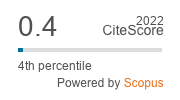Phylogeny of Indian Himalayan population of Bombus haemorrhoidalis Smith 1852 (Hymenoptera: Apidae) inferred from mitochondrial DNA sequences
DOI:
https://doi.org/10.33307/entomon.v47i1.689Abstract
Molecular variation and phylogenetic relationship of Bombus haemorrhoidalis Smith 1852 was studied using partial cytochrome oxidase I (COI) and cytochrome b (cyt b) sequences of mitochondrial genome. The COI and cyt b sequences were compared with available sequences of B. haemorrhoidalis and other Bombus species belonging to different subgenera to avail divergence within and between species. The BLASTn analysis of obtained COI sequence had cent percent identity to a hymenopteran species BOLD deposit AAC6447 (MAHYM005-10.COI-5P) which is a Bombus species from Pakistan. Both these species formed a separate cluster amongst the tested B. haemorrhoidalis species in phylogeny with pair wise genetic distance of 0.003. Moreover, the minimum evolution tree between the species revealed B. haemorrhoidalis is phylogenetically close with B. funerarius and the pair wise genetic distance between these two species was 0.102. Interestingly, B. haemorrhoidalis and B. funerarius formed separate minor cluster amongst the Bombus species tested for phylogeny. Additionally, both COI and cyt b genes were A+T biased and showed single nucleotide polymorphisms between and within species. The phylogenetic relationship of COI sequences also revealed single species status of B. haemorrhoidalis in the Indian Himalayan region and was evolutionarily associated with B. funerarius which is an another species in subgenera, Orientalibombus. The phylogeny of cyt b sequences showed that the B. haemorrhoidalis is evolutionarily close to pennsylvanicus group species. The study illustrates a complex genetic variation coupled with highly structured evolutionary divergences between and within species and provides the first report of cyt b sequence of B. haemorrhoidalis.


